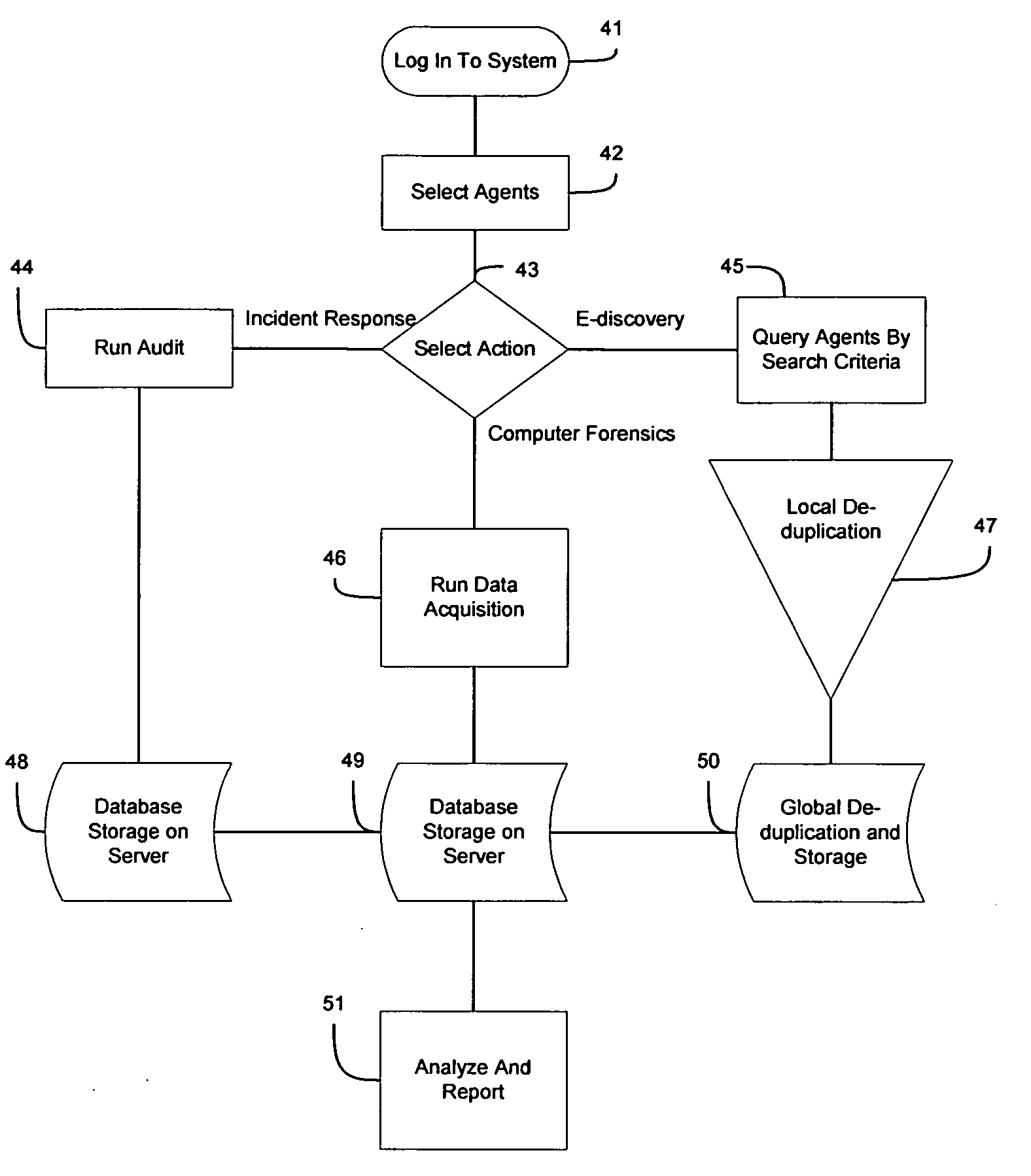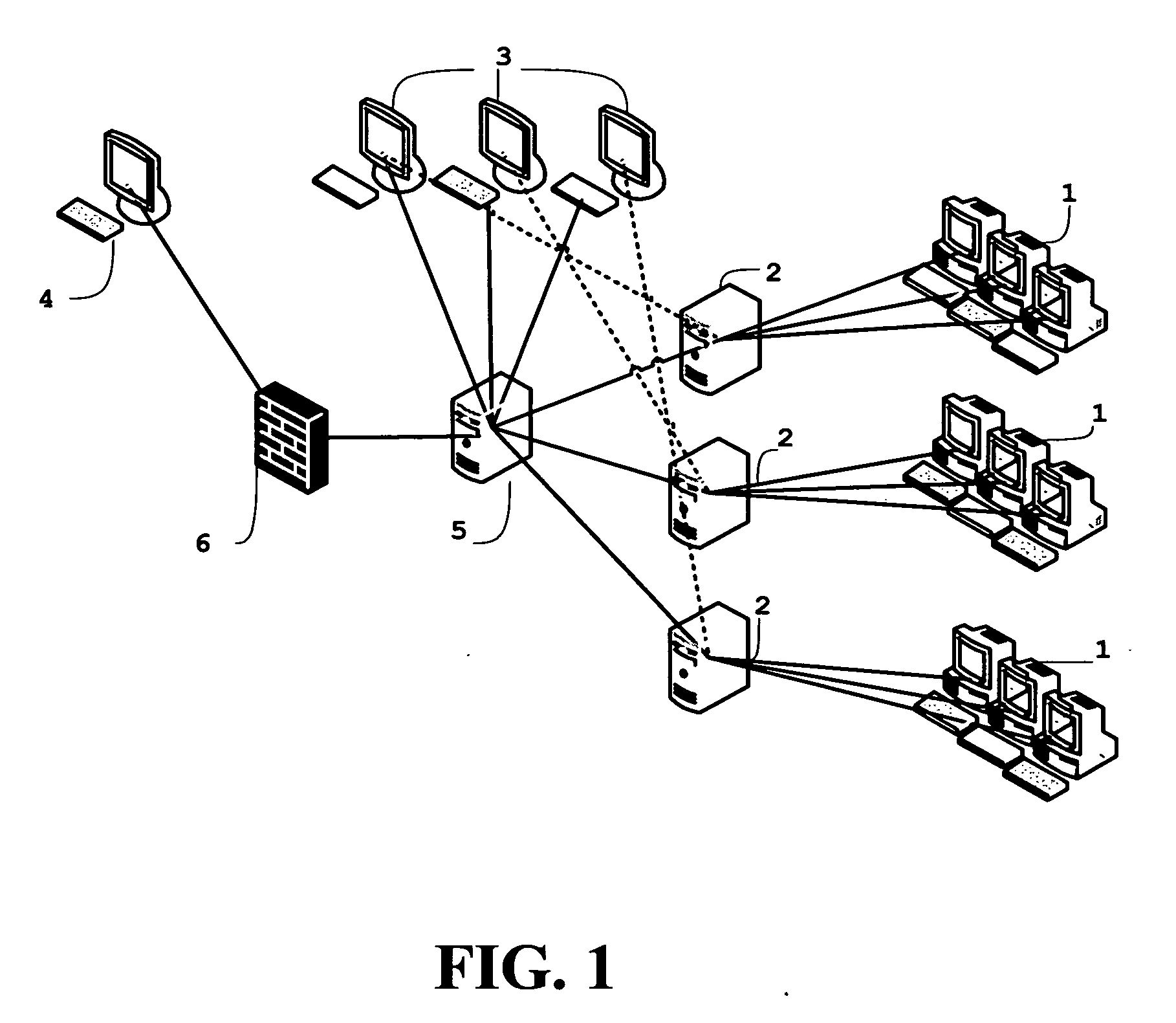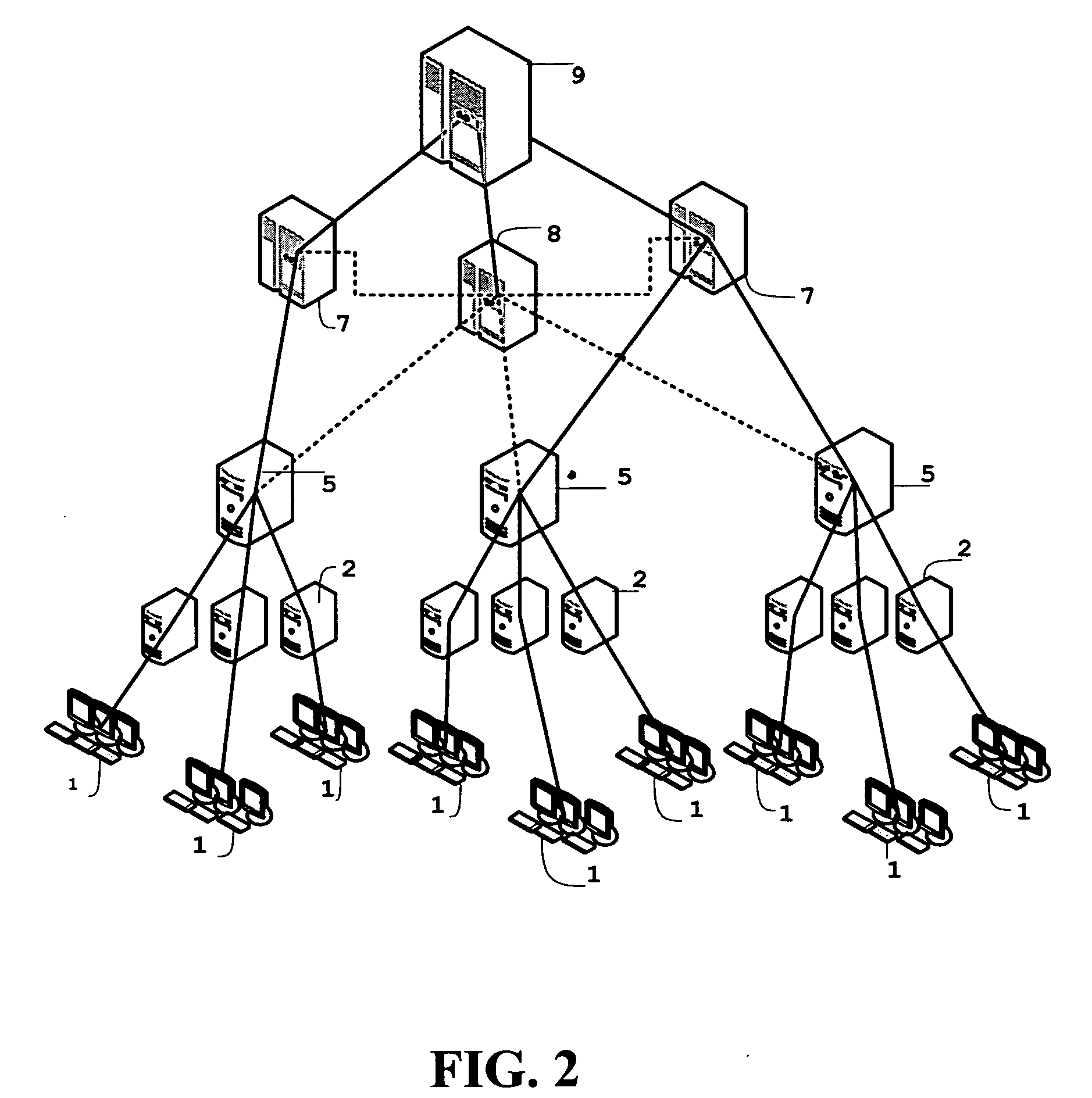Computer forensics, e-discovery and incident response methods and systems
a computer forensic and incident response technology, applied in computing, instruments, electric digital data processing, etc., can solve the problems of dichotomy in the forensic world, slow acceptance, and difficult to yield useful data in traditional forensic practices
- Summary
- Abstract
- Description
- Claims
- Application Information
AI Technical Summary
Benefits of technology
Problems solved by technology
Method used
Image
Examples
Embodiment Construction
[0029]Described herein are computer-based systems and methods for collecting forensic data, including volatile computer forensic data, from target computer systems in controlled and uncontrolled environments. The systems provide the ability to collect the desired forensic data covertly or overtly as circumstances may require. Although the systems and methods will be discussed with reference to various illustrated examples, these examples should not be read to limit the broader spirit and scope of the present invention. The general concepts and reach of the present invention are broader than the examples provided below.
[0030]Some portions of the description that follows are presented in terms of means, programs, and modules with a stated function that represent operations on data stored on a storage medium or in a computer memory. Such functional descriptions are used by those skilled in the computer science arts to effectively convey the substance of their work to others skilled in ...
PUM
 Login to View More
Login to View More Abstract
Description
Claims
Application Information
 Login to View More
Login to View More - R&D
- Intellectual Property
- Life Sciences
- Materials
- Tech Scout
- Unparalleled Data Quality
- Higher Quality Content
- 60% Fewer Hallucinations
Browse by: Latest US Patents, China's latest patents, Technical Efficacy Thesaurus, Application Domain, Technology Topic, Popular Technical Reports.
© 2025 PatSnap. All rights reserved.Legal|Privacy policy|Modern Slavery Act Transparency Statement|Sitemap|About US| Contact US: help@patsnap.com



